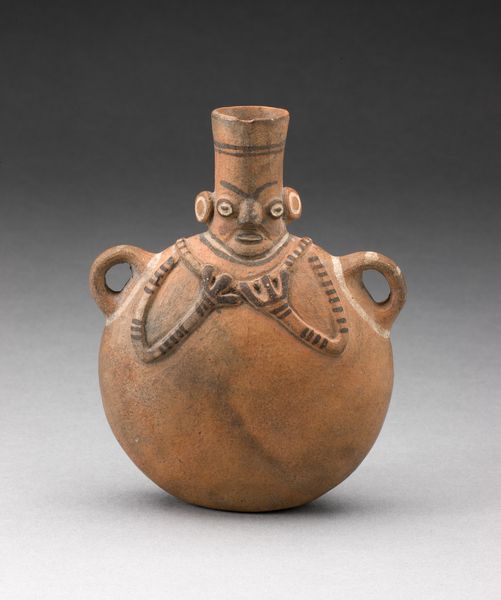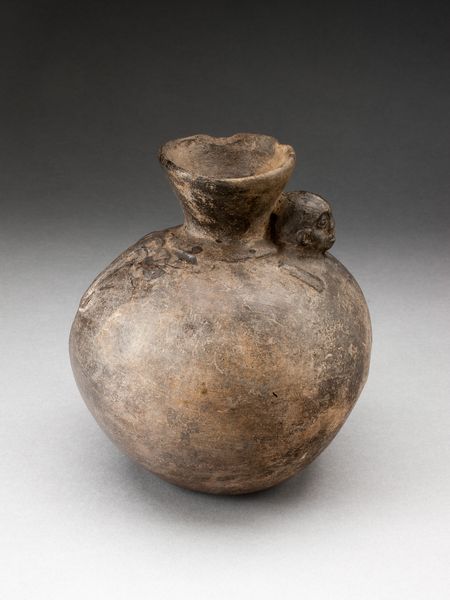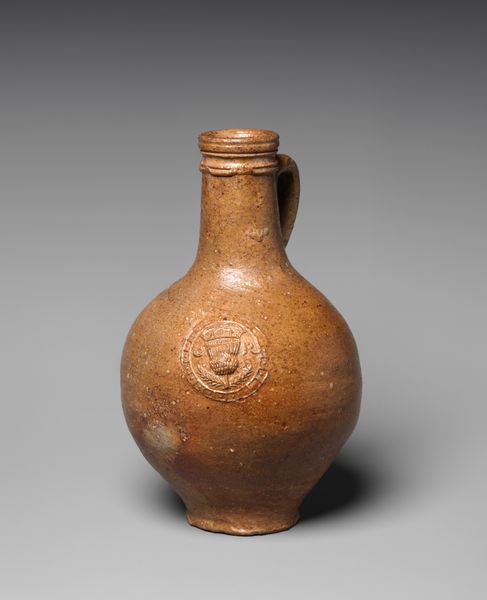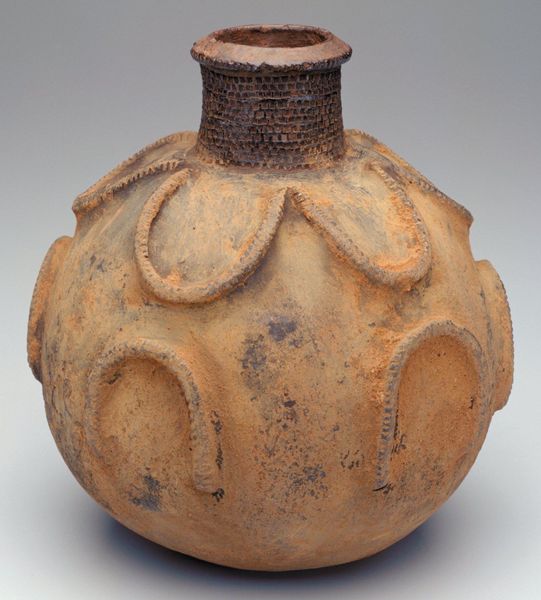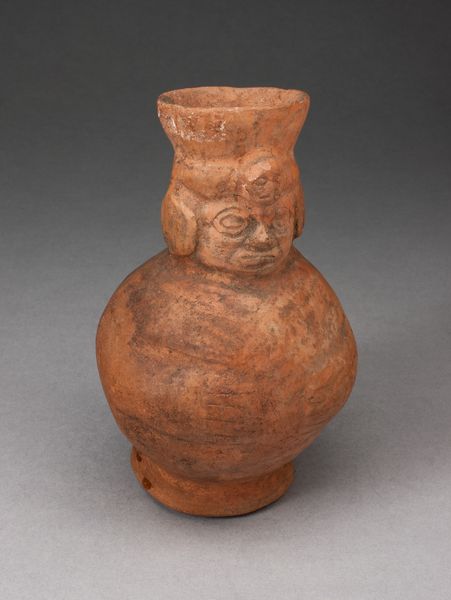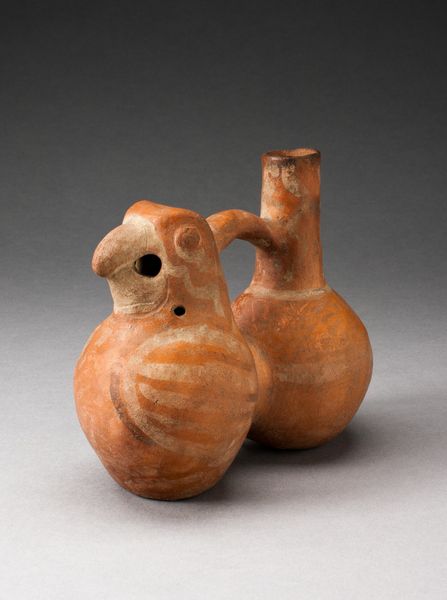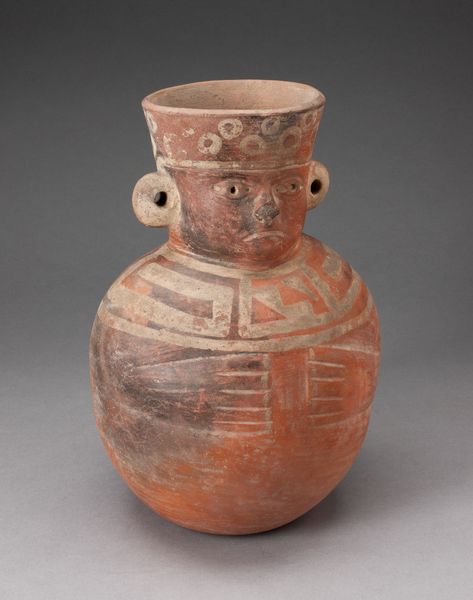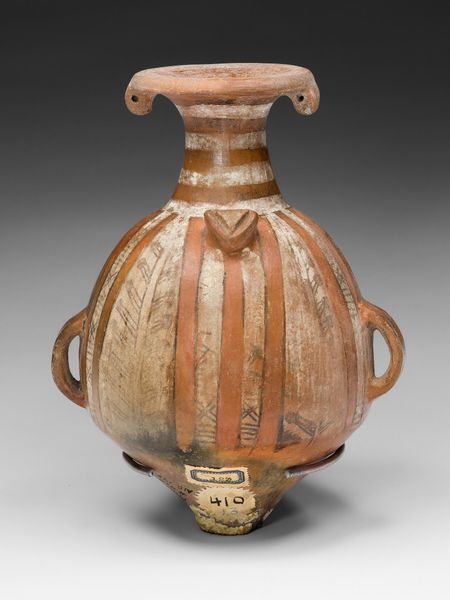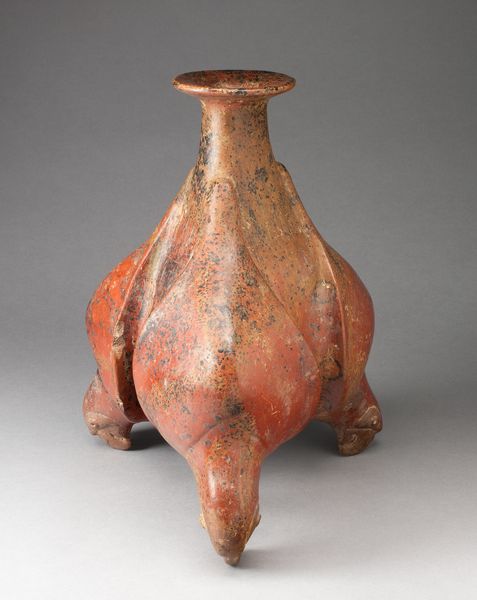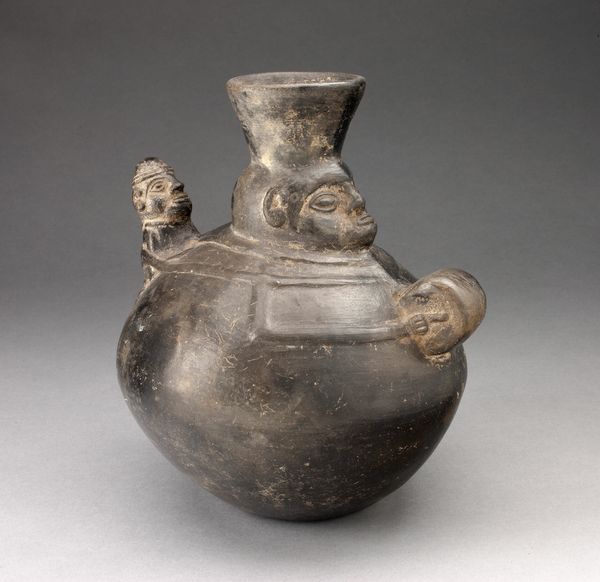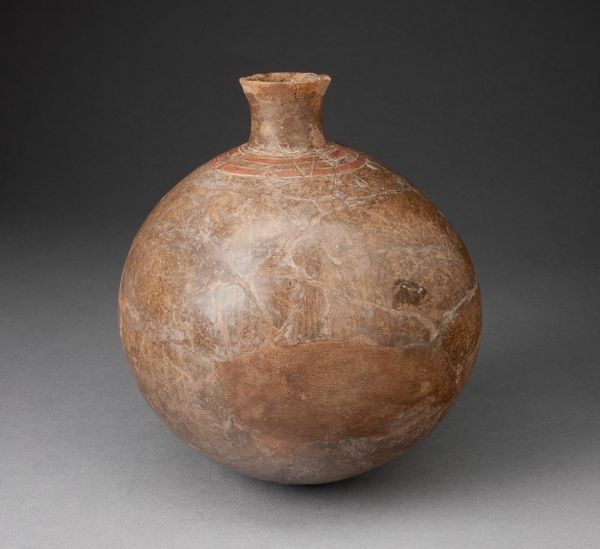
Miniature Gourd-Shaped Bottle in the Form of a Figure Possibly 1450 - 1532
0:00
0:00
ceramic, terracotta
#
ceramic
#
figuration
#
terracotta
#
indigenous-americas
Dimensions: 10.2 × 7 cm (4 × 2 3/4 in.)
Copyright: Public Domain
Editor: This is the "Miniature Gourd-Shaped Bottle in the Form of a Figure," made by the Inca people, possibly between 1450 and 1532. It’s a ceramic sculpture, and it has such a strong, almost stoic presence. What do you see in this piece? Curator: I see a powerful assertion of Indigenous identity. The gourd form speaks to the essential relationship between the Inca people and the land, while the human figure emerging from it suggests a deep connection between the natural and the social world. How do you think the sculpture engages with contemporary debates about cultural heritage? Editor: Well, it makes me think about the challenges of representing historical figures accurately, and also how to give agency to Indigenous voices in museum spaces. Do you think this bottle can challenge the legacy of colonialism within art institutions? Curator: Absolutely. By placing this figure, literally and metaphorically, at the center, it challenges Eurocentric perspectives and promotes a decolonized understanding of history. It demands that we confront power dynamics and consider the multiple narratives embedded within a single artifact. How does the bottle's materiality—the humble clay—play into its activist potential? Editor: That’s a great point. Using such simple materials connects the piece to the everyday lives of the Inca people. It avoids the glorification of precious materials often associated with colonial displays of wealth. I now see how the choice of medium is another challenge to traditional art history. Curator: Exactly. It forces us to redefine what we consider valuable and significant. And perhaps most importantly, it invites us to imagine the world from a radically different point of view, one centered on the experiences and perspectives of Indigenous peoples. Editor: It's really transformed my understanding. Seeing it as an active voice rather than a passive object makes all the difference. Curator: I agree; this dialogue with the past encourages critical engagement with our present.
Comments
No comments
Be the first to comment and join the conversation on the ultimate creative platform.
